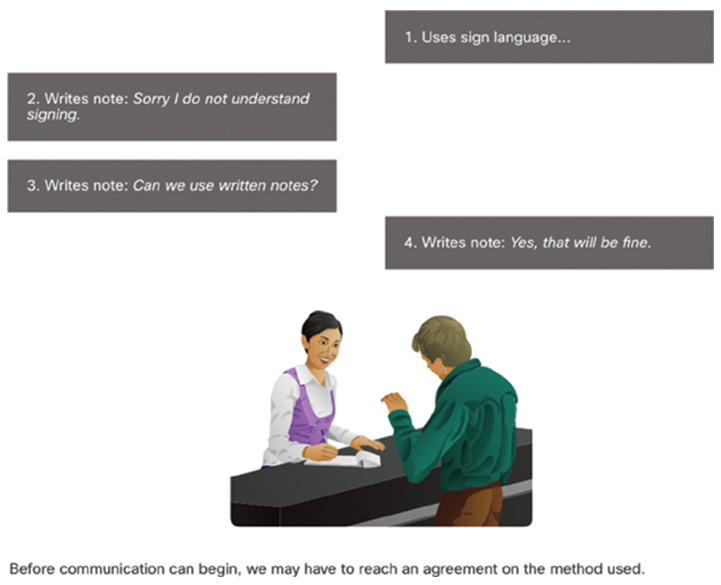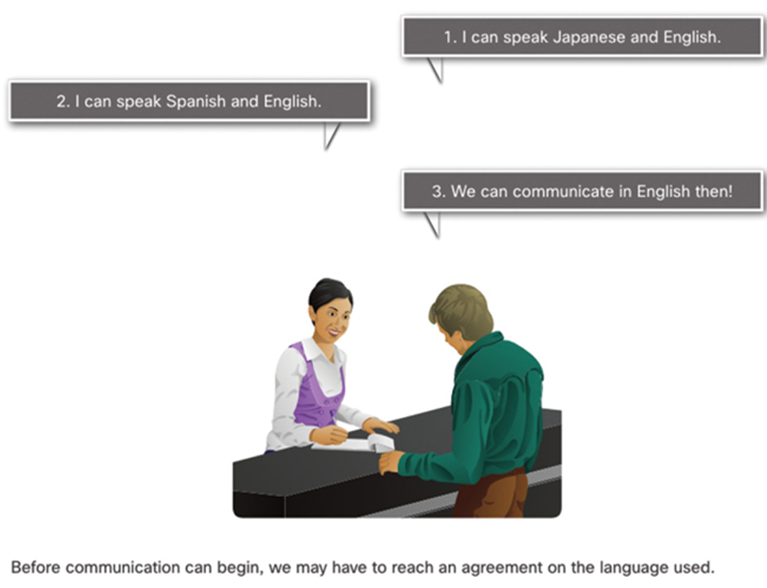Upon completion of this chapter, you will be able to answer the following questions:
• What are network communication protocols?
• What are network communication standards?
• What is the difference between the OSI and TCP/IP models?
This chapter uses the following key terms. You can find the definitions in the Glossary.
International Organization for Standardization (ISO)
Internet Engineering Task Force (IETF)
Open Systems Interconnection (OSI)
The next day, Kishori has a new patient, Srinivas, who has just been admitted to a room. He is from Narayanpet and speaks Telugu. Kishori speaks Marathi. These two Indian languages are very different. Kishori and Srinivas do not speak each other’s native language. However, they do both speak English. Therefore, they decide to communicate using English.
Before beginning to communicate with each other, we establish rules or agreements to govern the conversation. Just like Kishori and Srinivas, we decide what method of communication we should use, and what language we should use. We may also need to confirm that our messages are received. For example, Kishori may have Srinivas sign a document verifying that he has understood Kishori’s care instructions.
Networks also need rules, or protocols, to ensure successful communication. This module will cover the communication principles for networks. Let’s get started!
Before communicating with one another, individuals must use established rules or agreements to govern the conversation. Rules are also required for devices on a network to communicate.
Communication Protocols (5.1.1)
Communication in our daily lives takes many forms and occurs in many environments. We have different expectations depending on whether we are chatting via the internet or participating in a job interview. Each situation has its corresponding expected behaviors and styles.
Before beginning to communicate with each other, we establish rules or agreements to govern the conversation. These agreements include the following:
• What method of communication should we use? (Figure 5-1)
• What language should we use? (Figure 5-2)
• Do we need to confirm that our messages are received? (Figure 5-3)

Figure 5-1 Choose a Method for Communication

Figure 5-2 Choose a Language for Communication

Figure 5-3 Verify that Communication was Successful
These rules, or protocols, must be followed in order for the message to be successfully delivered and understood. Among the protocols that govern successful human communication are these:
• An identified sender and receiver
• Agreed upon method of communicating (face-to-face, telephone, letter, photograph)
• Common language and grammar
• Speed and timing of delivery
• Confirmation or acknowledgment requirements
The techniques that are used in network communications share these fundamentals with human conversations.
Think about the commonly accepted protocols for sending text messages to your friends.
